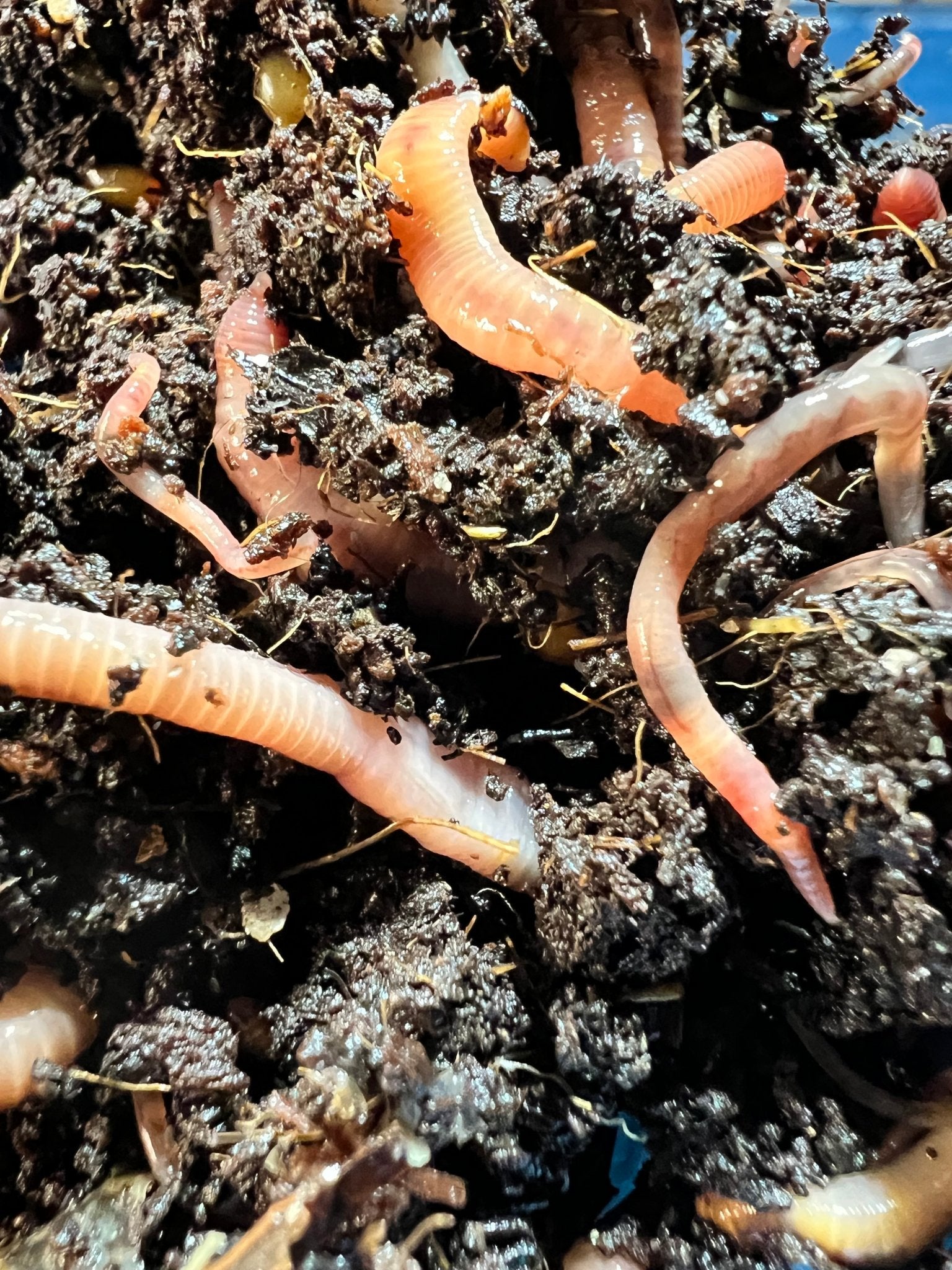Red Wiggler Worms Demystified: Unlocking the Secrets of Vermiculture for Greener Living and Nutrient-Rich Soil
In the world of sustainable techniques for enriching dirt top quality and advertising eco-conscious living, red wiggler worms play a pivotal yet frequently ignored function. These humble creatures have the impressive ability to transform natural waste into nutrient-rich spreadings that act as a powerful all-natural fertilizer. By delving into the globe of vermiculture, one can discover a plethora of advantages that expand far past standard composting approaches. Comprehending the intricacies of taking care of these worms, optimizing their setting, and using their castings can cause a greener way of life and healthier dirt for plants to grow.
The Role of Red Wiggler Worms
Red Wiggler worms play an important role in composting systems by successfully damaging down natural issue into nutrient-rich castings. These starved eaters consume a selection of natural products, such as kitchen area scraps, lawn waste, and paper products. As they feed, the worms' digestive system procedures damage down the raw material into a penalty, dark, and nutrient-dense product referred to as worm castings or vermicompost.
The castings created by Red Wiggler worms are very valuable for soil health and wellness and plant growth. They are rich in essential nutrients like phosphorus, nitrogen, and potassium, which are vital for sustaining healthy plant growth. In addition, worm castings have advantageous germs and enzymes that assist improve soil structure, increase water retention, and boost nutrient uptake by plants.
Advantages of Vermicomposting

Moreover, vermicompost, the nutrient-rich final product of vermicomposting, acts as a superb organic plant food and dirt conditioner. It boosts dirt framework, improves soil oygenation, and increases dirt wetness retention. These residential properties add to healthier plants with stronger origin systems and far better resistance to parasites and illness. Vermicompost also improves the soil with vital nutrients like nitrogen, potassium, and phosphorus, advertising plant growth and overall dirt fertility.
In addition, vermicomposting assistances lasting horticulture techniques by offering a chemical-free and natural alternative to synthetic plant foods. Red Wiggler Worms. This ecologically pleasant method not just enhances the dirt however likewise helps in reducing reliance on hazardous chemicals, promoting a greener and more lasting method of horticulture
Establishing Up a Worm Bin
When developing a worm container for vermicomposting, correct setup is important to guarantee the success of the composting procedure. The first step in setting up a worm container is choosing an appropriate container.
After including the bedding, introduce the red wiggler worms to the bin. It is advised to begin with a handful of worms and progressively enhance as they increase. The worms must then be given with food scraps such as vegetables and fruit peels, coffee grounds, and eggshells. It is vital to try this out stay clear of adding meat, dairy, oily, or salty foods to stop drawing in bugs and creating undesirable odors.
Regularly check the wetness degrees and temperature in the worm container to ensure optimal problems for the worms. With appropriate arrangement and maintenance, the worm bin will efficiently convert natural waste into nutrient-rich compost for your index plants and yard.
Gathering Worm Castings
To successfully collect nutrient-rich worm castings from your vermicomposting system, a methodical harvesting approach is important. When it comes time to collect the worm castings, there are a couple of essential actions to comply with to make certain a successful process. To start with, stop including fresh food scraps away of the worm bin for a couple of weeks before gathering. This motivates the worms to move sideways with fresh bed linen and food, making it much easier to dig the spreadings from the other side.

Troubleshooting Common Issues
Identifying and addressing common difficulties that may emerge during the vermicomposting procedure is essential for preserving a healthy and productive worm container. One common concern that vermicomposters experience he has a good point is overfeeding. Including excess food scraps can bring about an accumulation of dampness and acidity in the worm container, possibly harming the worms. To stop this, feed the worms in small amounts, making certain that the food scraps are properly damaged down before adding extra. Another problem is unpleasant smells emanating from the worm container. Foul scents suggest anaerobic problems, typically brought on by overwatering or poor ventilation. To treat this, adjust the dampness levels by including completely dry bed linens materials like shredded paper or cardboard and rise oygenation by turning the bed linen on a regular basis.
Furthermore, if the worm populace is declining or the worms show up unhealthy, it could be due to ecological stressors such as extreme temperatures or pH degrees. Monitoring these aspects and making needed adjustments is necessary for the health of the worms. By fixing these typical concerns promptly, vermicomposters can ensure a effective and smooth vermicomposting process while keeping a prospering worm population.

Conclusion
In conclusion, red wiggler worms play an important role in vermiculture by damaging down natural matter into nutrient-rich dirt. Establishing up a worm bin is important for effective vermiculture, and collecting worm castings provides beneficial compost for gardening.
As they feed, the worms' digestion processes damage down the natural issue into a penalty, dark, and nutrient-dense material understood as worm spreadings or vermicompost.
The spreadings produced by Red Wiggler worms are highly valuable for dirt health and wellness and plant growth. Including excess food scraps can lead to a buildup of wetness and acidity in the worm container, possibly harming the worms.Additionally, if the worm populace is decreasing or the worms appear harmful, it can be due to ecological stress factors such as extreme temperatures or pH levels. Setting up a worm bin is vital for effective vermiculture, and gathering worm spreadings offers valuable compost for horticulture.